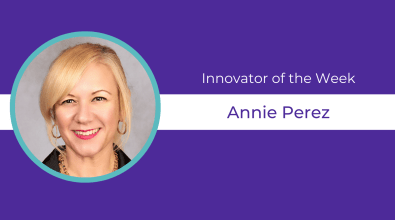How to use federal aid to bolster City Hall’s innovation capacity
The American Rescue Plan offers cities a chance to build up their data and resident engagement skills. Here’s how four cities are meeting the moment.

(Evgenia Parajanian/Shutterstock)
The American Rescue Plan’s $350-billion relief fund is a once-in-a-generation opportunity for local leaders to invest in their communities and is ushering in an era of profound local experimentation. It’s also remarkable for another reason: It gives cities a path to build up their innovation muscles for the long term.
Most directly, the federal law is a potential catalyst for the use of data and evidence to improve outcomes in local government. Cities can invest federal relief dollars to upgrade certain data systems, perform evaluations of program impact, and either build internal evaluation capacity or contract for it. (The U.S. Treasury Department's final rule released in January, 2022, endorsed this.) Cities of 250,000 or more are required to show whether they are spending the money on evidence-based interventions and report on the outcomes of their programs. Meanwhile, a number of cities are using the federal windfall as an opportunity to double-down on resident engagement efforts, to ensure that the ways they propose to spend the funds are aligned with residents’ priorities.
With federal money in abundance for the first time in recent memory, cities are racing toward new ideas.
Jessica Cole, COO and co-founder of the nonprofit U.S. Digital Response, says the ARP’s emphasis on data, metrics and equity—and the funding to pay for it—is an opportunity for local leaders to accelerate a transformation that is already well under way. “This is the launch point to make it possible for governments to try new things for the next 10 to 20 years,” she says.
To see how some data-centric governments are approaching this aspect of their recovery funding, Bloomberg Cities spoke with officials in four cities about their plans.
Increasing access to assistance programs
During the pandemic, Seattle has been working extensively with community-based organizations to get the word out in hard-to-reach communities about things like vaccines, Census participation, and access to safety-net programs. Now, the city’s Innovation & Performance team is building upon that success and working with community groups to help pilot a new tool that will simplify the process of applying for all city assistance programs.
The unified application tool, CiviForm, is being developed with the help of a team of Google.org fellows and support from U.S. Digital Response. The goal is to speed up the process and more quickly get aid to those who need it by allowing applicants to enter their information just once to apply for all city assistance programs. The i-team is working with El Centro de la Raza, the Chinese Information and Service Center, and the Refugee Women's Alliance to help test the tool with residents.
Seattle is using $500,000 in ARP funds to enhance and implement the tool, including hiring three software developers and a product manager to run CiviForm. In addition, ARP funds will be used to hire two more data scientists to support impact analysis and evaluation of all recovery investments. All six positions sunset after three years, but Director Tina Walha says she hopes “the next three years will demonstrate the impact of having more resources internally dedicated to a) measurement and evaluation and b) product management and development. I view this as an opportunity to demonstrate the impact of having those skills in-house."
Investing in data infrastructure
Cities welcome the flexibility they’ve been given in terms of where they can spend their recovery funds. But that also makes it difficult to universally track and compare progress on recovery projects. Different agencies have different metrics and frames in which they collect data, and transcribing and standardizing data sets takes up a lot of data scientists’ time. That makes it harder to move at the speed necessary to map outcomes, including equity and evidence-based interventions, and respond in a timely way.
The recovery spending plans for the city of Syracuse, N.Y., aren’t yet finalized, but Chief Innovation & Data Officer Nicolas Diaz Amigo says the fact that the federal reporting guidelines specifically called out these practices helps make the case for increasing Syracuse’s data infrastructure. Mayor Ben Walsh's proposed spending plan includes $2 million to invest in a system that would increase capacity, synthesize the information so that analysts can compare across agencies, and automatically update when new data is available. The goals also include creating a better user experience for constituents accessing city services and beefing up the city's defense against cyber attacks.
“If you want to do the cool analytics, you first need to make sure you have access to data, it’s high quality, and it is easily accessible,” Amigo says. Investing in that infrastructure now, he added, “sets the foundation for transformative things to happen going forward.”
Engaging residents to build thriving cultural corridors
People of color make up more than two-thirds of the population in Long Beach, Calif., where a vital part of the city’s recovery plan aims to help businesses in its diverse neighborhoods thrive. City officials plan on using multiple funding streams available through the ARP—like Capital Investment Grants and small business grants, as well as the more flexible fiscal recovery funds—to develop three cultural corridors: one focused on the city’s African-American history and residents, one on the city’s Latinx community, and the third in the Cambodia Town neighborhood. The corridors idea was around before the pandemic but it has gained steam as Long Beach looks to its recovery.
The city’s Office of Civic Innovation is working with the Economic Development Department to put residents' voices at the center of the planning process—a critical component of how the office views innovation. The i-team is taking its well-honed approach that relies on its expertise in human-centered design, data analysis, and engaging residents as co-creators to work with residents and business owners on their priorities for each corridor. The community engagement process for the Latinx cultural corridor, for example, collected input from 700 community members (including focus groups) and identified business incubation, cultural murals, and the arts as priorities, among others.
This fall, the team will develop metrics around these priorities, such as employment rate and number of new businesses. Chief Innovation Officer Tracy Colunga says she wants to create a data dashboard to track the progress of the projects and community goals. “Every activity we undertake has to go back to those three top priorities that the community asked of us,” she says. “They’re going to hold us accountable.”
Creating and measuring opportunities for upward mobility
When city officials in Mobile, Ala., first began shaping their recovery spending plan, they already had a good idea of the gaps in equity that were affecting their residents. That’s thanks in no small part to the ground-up approach Mobile’s Innovation Team takes to collecting resident feedback as the starting point for innovation. The team accelerated that approach through the pandemic, using online equity workshops to reach about 400 residents, and using 311 as a listening tool to understand residents’ needs. The data pointed city leaders to a framework for planning and designing Mobile’s recovery: advancing equity through upward mobility.
Now, city leaders are tapping ARP funds to further that goal and have identified $29 million in equity projects that they think will help. For example, $8 million is proposed for rehabbing a vacant historic building downtown, which would place 94 affordable and low-income housing units amid high-end luxury condos and apartments. The idea is that having affordable housing in a high-demand area will create upward mobility opportunities for residents. The next step is developing the metrics to track and measure progress—a process that will also put user feedback at the center.
“Through the research and engagement we’ve already done, we are now co-creating this program with the people who need it most,” says Mobile i-team Director Terrance Smith. “Now we have to be sure that we can stay locked into what we say we're going to do and how we’re going to do it.”


